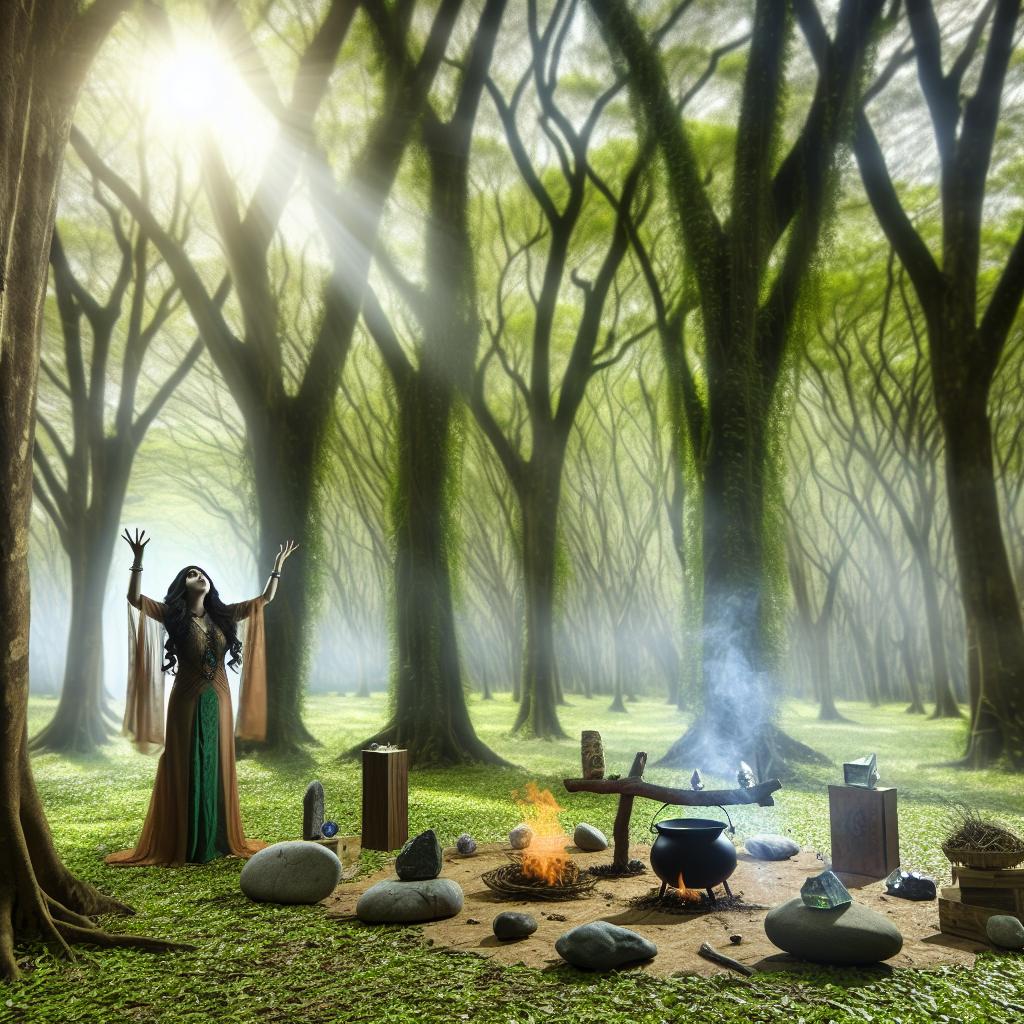
The Importance of Nature and Elements in Wiccan Practices
Wicca, a modern pagan religion marked by a profound connection to nature, centers its practices on the belief that the natural world and its elements are sacred and influential. Recognized as a vibrant source of energy and spiritual insight, the Earth plays a pivotal role in the lives of Wiccans. In honoring this connection, Wiccan rituals are deeply intertwined with the cycles and forces of nature. By embracing these elements, Wiccans aim to forge a harmonious relationship with the world around them.
Nature as a Sacred Entity
For practitioners of Wicca, nature transcends its role as a mere setting for human actions; it stands as a hallowed entity deserving of profound reverence. The spiritual framework of Wicca dictates that nature is not an outside force to be controlled or dominated but rather an intrinsic part of existence to be cherished and respected. This belief manifests in various rituals and ceremonies performed to celebrate the perpetual cycles of nature, such as the changing seasons and the phases of the moon. Through these practices, Wiccans cultivate a deepened sense of connection to the Earth’s subtle rhythms. By acknowledging these natural processes, they honor the life-giving and sustaining features of the environment.
The Role of the Four Classical Elements
A cornerstone of Wiccan beliefs involves the profound appreciation and incorporation of the four classical elements: Earth, Air, Fire, and Water. Each element holds specific attributes and is aligned with particular directions, believed to be crucial for creation and the maintenance of life.
Earth signifies stability, the physical realm, and encompasses qualities related to prosperity, growth, and fertility. It is traditionally linked with the northern direction, and its grounding properties make it vital in practices aimed at achieving balance and abundance.
Air represents intellect, communication, and is associated with the virtues of inspiration and foresight. Commonly linked with the eastern direction, Air’s dynamic qualities often relate to the processes of change and the new beginnings heralded by dawn.
Fire embodies transformation, passion, and the drive of willpower. Corresponding with the southern direction, Fire is often invoked in rituals that focus on personal growth, empowerment, and the courage to pursue one’s passions.
Water correlates with emotions, intuition, and the fluid ebb and flow of feelings intrinsic to the human experience. As a western element, Water is integral to rituals that explore deeper emotional understanding and healing.
These elements, as components of ritual practice, enable Wiccans to create harmony and balance, drawing upon each element’s unique energies to facilitate spiritual transformation and connection.
Rituals and Tools
Wiccan rituals often take place in nature, allowing practitioners to physically and spiritually connect with the environment. This direct interaction harnesses nature’s energies, creating conducive spaces for spiritual bonding. Whether performed outdoors or indoors, rituals foster communion with the broader natural world.
When ceremonies are conducted indoors, Wiccans focus on creating a designated sacred space, often using representations of nature to invite its energies into the enclosed setting. This ritual space typically includes altars with tools symbolizing the elements, which serve to focus and direct energies during spiritual practices:
– The pentacle represents Earth, symbolizing protection and an anchoring connection to physical reality.
– The athame, a ritual knife, symbolizes Air, reflecting clarity, direction, and the ability to cut through illusions.
– Wands serve as a representation of Fire, channeling the wearer’s energy and influence.
– The chalice is a symbol for Water, used in rituals involving purification and emotional exploration.
These tools not only symbolize elements but also function as focal points in ritualistic settings, facilitating the engagement with elemental forces and fostering a deeper spiritual awareness.
Nature’s Cycles and the Wiccan Wheel of the Year
Central to Wiccan spirituality is the Wheel of the Year, which features prominently in their ceremonial calendar. The Wheel comprises eight festivals marking significant transitional points within the seasonal cycle. These festivals, which include Samhain, Yule, Beltane, and others, celebrate the cyclical nature of life, emphasizing the processes of growth, death, and rebirth intrinsic to natural cycles.
Each festival observes a key shift in nature’s cycle, symbolizing the interconnectedness of life and the wisdom inherent in continual change. By celebrating these sacred days, Wiccans reaffirm their commitment to living in synchronous harmony with nature, recognizing the shifts and changes in the seasons as reflection points for growth and renewal.
For instance, Samhain, celebrated as the end of harvest and the onset of winter, encourages reflection on mortality and the remembrance of ancestors, emphasizing the theme of death within life. Conversely, Beltane, associated with fertility and spring blossoming, celebrates life and new beginnings.
Conclusion
The integral role of nature and its elements in Wiccan practices underscores a worldview marked by a deep-rooted reverence for the Earth and its energies. Wiccans inherently understand the sacredness of the natural world, continually seeking a life of balance by engaging with its rhythms and forces. By honoring these elements and nature’s cycles, Wiccan practices embody a holistic spirituality that emphasizes the interconnection of all living beings. Through their rituals and conscientious lifestyle, Wiccans exemplify living in harmony with the Earth, continuously deriving wisdom and inspiration from nature’s enduring presence.
